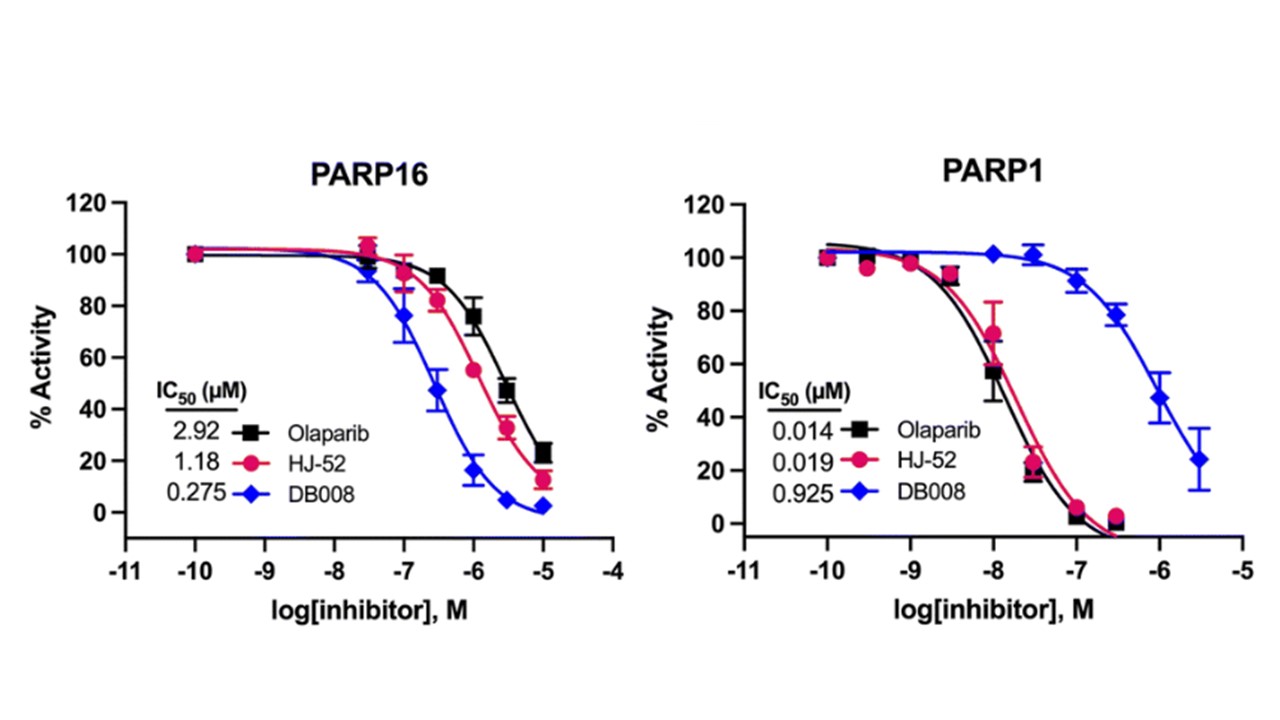Description:
Summary
The current technology is a selective, covalent inhibitor of PARP16 with potential therapeutic applications for the treatment of cancer.
Technology Overview
The poly-ADP-ribose-polymerase (PARP) family is made up of 17 enzymes in humans that are increasingly recognized as major downstream regulators of NAD+-mediated signaling in cells. PARP1 inhibitors have shown efficacy as cancer drugs, raising interest in understanding the therapeutic potential for other PARP family members.
Recent studies demonstrate that PARP16 is essential for the survival of several cancers, including ovarian and breast cancer. OHSU researchers have designed a novel inhibitor of PARP-16, DB008, with the following properties:
- An IC50 of 275 nM for inhibition of PARP16.
- Irreversible and specific inhibition PARP16 through covalent binding, which is not observed with other PARP family members.
- Excellent proteome-wide selectivity of DB008 under conditions of saturable PARP16 labeling.
 Figure demonstrating DB008 demonstrates improved potency for inhibition of PARP16 as compared to Olaparib, and selectivity for PARP16 verses PARP1.
Figure demonstrating DB008 demonstrates improved potency for inhibition of PARP16 as compared to Olaparib, and selectivity for PARP16 verses PARP1.
Publication
Bejan DS, et al., Structure-guided design and characterization of a clickable, covalent PARP16 inhibitor. Chem Sci. 2022 Nov 16;13(46):13898-13906. Link
Licensing Opportunity
This technology is available for licensing.